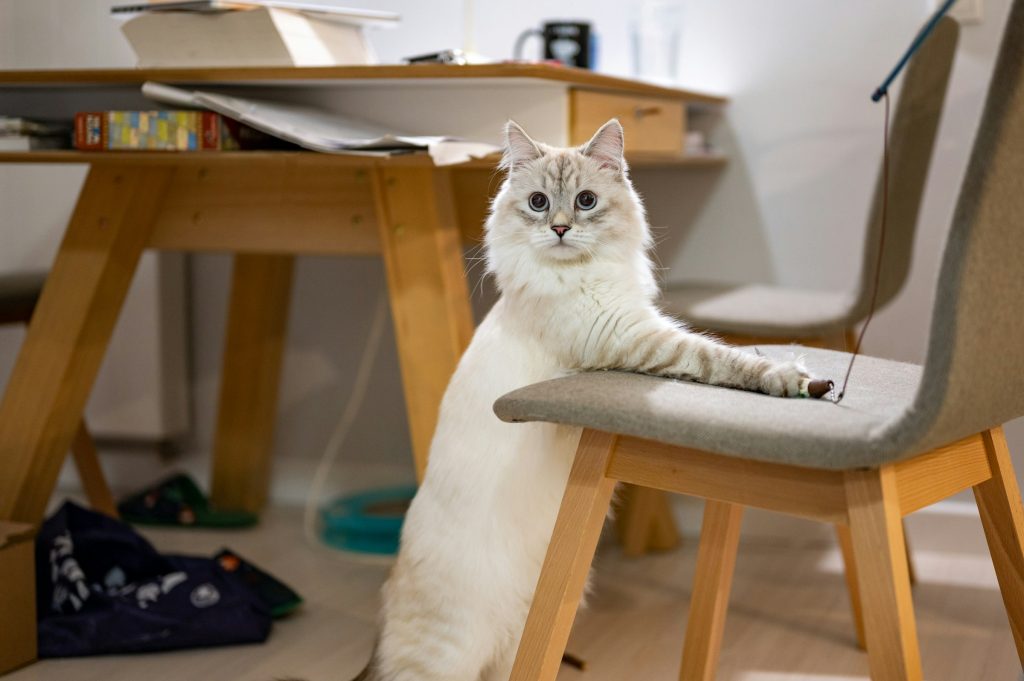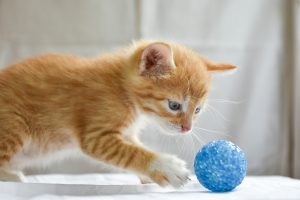
15 Proven Cat Enrichment Ideas That Actually Prevent Boredom Indoors
Is your cat meowing constantly, knocking things off shelves, or napping out of sheer boredom? Indoor cats need more stimulation than most owners realize—and without it, they can become anxious, destructive, or withdrawn. The good news? Cat enrichment doesn’t have to mean expensive toys or elaborate playrooms. With a little creativity and the right guidance, you can turn your home into a feline paradise. These proven cat enrichment ideas will help your kitty stay happy, healthy, and mentally engaged—even in the smallest apartment.
1. Create a DIY Window Perch with a View
Cats love to watch the world go by. Use a suction-cup perch, window hammock, or even a padded shelf to give your kitty front-row access to birds, squirrels, and passing cars. Add a soft blanket, and it’ll become a favorite nap spot too.
2. Rotate Toys Weekly to Keep Things Exciting
Cats get bored of toys fast—but rotating them can make old favorites feel new again. Keep a small bin of toys and swap them out every few days to reignite your cat’s curiosity without buying anything new.
3. Use DIY Puzzle Feeders or Food Hunt Games
Food can be a fun game for cats too. Hide treats in cardboard egg cartons, use a treat ball, or scatter kibble throughout your space to engage your cat’s natural hunting instincts. The ASPCA has great DIY enrichment ideas you can make at home.
4. Add Vertical Space with Cat Trees or Wall Shelves
Indoor cats thrive when they can climb, perch, and explore at different heights. Invest in a tall cat tree or mount cat shelves on the wall to give them vertical territory. This is especially helpful in small spaces or multi-cat households.
5. Try Interactive Toys that Mimic Prey
Feather wands, robotic mice, and laser toys can trigger your cat’s chase instincts and provide essential exercise. Switch up the toy type and pace to keep it unpredictable—just remember to let your cat “catch” something at the end of play.
6. Offer Different Textures and Scents for Exploration
Cats are sensory creatures. Let them explore textured mats, soft fleece, rough cardboard, and cat-safe herbs like silvervine or valerian. Novel textures and smells can satisfy their curiosity and reduce boredom-related behaviors.
7. Set Up a Cat TV Station (Yes, Really)
Many cats enjoy watching birds, fish, or slow-motion prey animations. Play cat-specific YouTube videos or nature channels on a loop while you’re out. Some cats may even interact with the screen—just keep fragile decor out of swatting range!
8. Create DIY Hidey Holes or Exploration Tunnels
Cats love enclosed spaces. Turn cardboard boxes, paper bags, or collapsible fabric tunnels into hideouts they can sneak into and stalk from. Change up the layout every few weeks to keep things interesting and unpredictable.
9. Use Scent Enrichment Like Catnip or Silvervine
Sprinkle catnip on toys, use silvervine sticks, or try valerian root sachets to activate your cat’s play mode. Rotate scents to prevent desensitization and turn scent time into an exciting part of their daily routine.
10. Give Your Cat a Safe Outdoor View with a Catio
A small balcony catio or screened enclosure gives indoor cats the sights, sounds, and smells of nature without risk. Even a simple mesh window box or DIY porch setup can offer a huge mental boost. Check out the Fear Free Happy Homes guide for ideas.
11. Schedule Short but Consistent Play Sessions
Cats benefit from daily interactive play, even in small bursts. Just 10–15 minutes in the morning and evening with a wand toy or chase game can make a huge difference in their behavior and overall mood.
12. Set Up Enrichment Stations in Multiple Rooms
Don't let all the fun happen in one room. Set up mini enrichment zones—like a tunnel in the hallway, a scratching post in the kitchen, or a window perch in the bedroom—to give your cat a sense of variety and territory.
13. Incorporate Scratching into Enrichment Time
Scratching is both physical exercise and emotional release. Try vertical, horizontal, and angled scratchers, and sprinkle some catnip on them during playtime. Bonus: it’ll save your furniture too.
14. Let Them “Help” With Daily Routines
Whether it’s “helping” you load the dishwasher or nap in a laundry basket, cats love being involved. Make safe participation part of their enrichment—just clear hazards and reward calm behavior with a soft voice or gentle scratch.
15. Give Them a Choice in Everything
True enrichment means letting your cat make decisions. Offer multiple nap spots, toys, and perches, and let them choose how to engage. It builds confidence, reduces anxiety, and makes their world feel more secure and interesting.
Final Thoughts
Boredom isn’t just a minor inconvenience for indoor cats—it can lead to real behavior issues, weight gain, and emotional stress. With just a little effort each day, you can transform your space into a stimulating, fun, and safe playground for your cat. Whether you’re building a window perch or sprinkling catnip in a cardboard tunnel, these simple cat enrichment ideas help your feline thrive—even in a small apartment.
Frequently Asked Questions
How can I tell if my indoor cat is bored?
Signs of boredom include excessive meowing, destructive behavior (like knocking things over or scratching furniture), overeating, or sleeping too much. If your cat seems restless or uninterested in play, it's time to add more enrichment.
What are the best cat enrichment ideas for small apartments?
Window perches, vertical climbing spaces, rotating toys, and scent-based enrichment (like catnip or silvervine) are excellent in small spaces. Even cardboard boxes or paper bags can be turned into exciting hideouts.
How often should I rotate my cat’s toys?
Every 3–4 days is ideal. Rotating toys prevents boredom and keeps your cat engaged with old favorites. Store unused toys in a closed bin to make reintroductions feel like new surprises.
Do indoor cats need playtime every day?
Yes! Even short sessions (10–15 minutes, twice a day) provide essential mental and physical stimulation. Use interactive toys to mimic hunting behavior, and always let your cat “win” at the end of a play session.
Where can I learn more about feline enrichment?
Two great starting points are the Fear Free Happy Homes guide and the ASPCA’s DIY enrichment resources. They both offer practical, cat-safe ideas that work in any home.

Join the Busy Pet Parent Newsletter!
Get easy routines, time-saving tips, and the latest gear reviews—delivered straight to your inbox.
Perfect for busy pet owners, apartment dwellers, and anyone who wants a happy, healthy companion (without the stress).
Exclusive guides & checklists
Product recommendations & deals
No spam—unsubscribe anytime!




